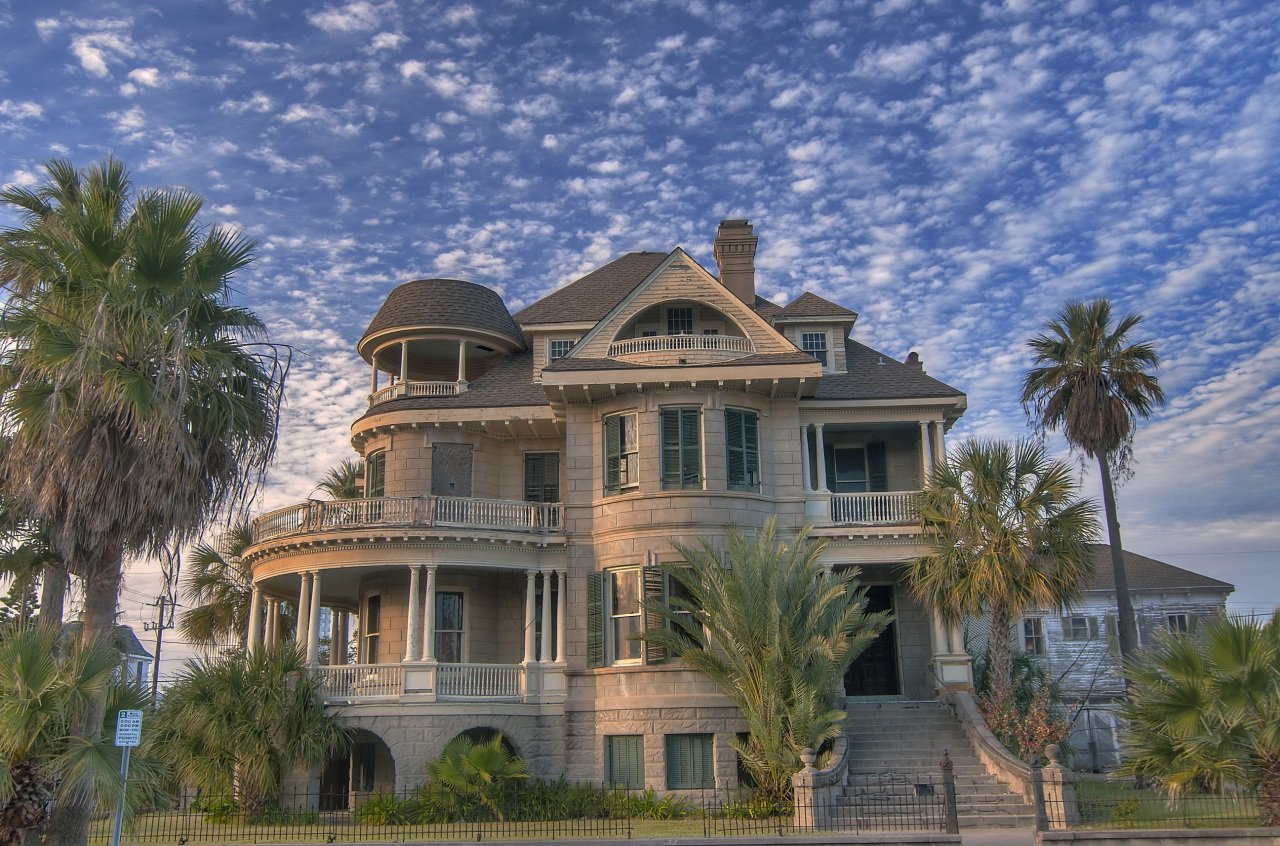Facade #187
Before us stands an impressive example of Victorian Queen Anne architecture with elements of Colonial Revival, likely located in a southern coastal region of the United States, judging by the surrounding palm trees. The mansion is characterized by a rich asymmetrical composition and multi-level structure.
The façade features an exquisite combination of architectural elements. The building is constructed from light-colored stone, giving it both monumentality and elegance. Expressive rounded verandas with classical order columns frame the structure from several sides. Particularly noteworthy is the corner tower with a dome-shaped roof, which creates a dynamic accent in the overall composition.
The roof has a complex configuration with multiple levels and slopes covered with dark shingles, contrasting with the light walls. The dormer window on the gable is decorated with a balustrade, adding sophistication to the upper part of the building. Numerous balconies with white balustrades encircle the second and third floors, creating a sense of airiness and openness.
Window openings of various shapes and sizes are adorned with green shutters, adding southern charm to the building. The façade is given special expressiveness by the arched openings in the lower tier, characteristic of neo-romantic architecture. A wide staircase leads to the main entrance, emphasizing the monumentality and stateliness of the building.
The surrounding palm trees and tropical vegetation harmoniously blend with the architecture, creating a unique example of Victorian style adaptation to a southern climate. This building represents a remarkable example of architectural heritage from the late 19th to early 20th century, preserving the authenticity and grandeur of a bygone era.
